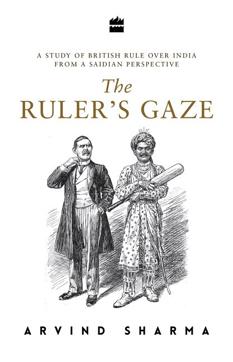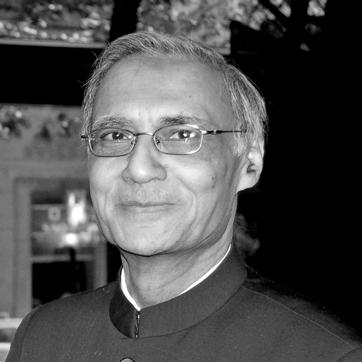Review: The Ruler’s Gaze: A Study of British Rule from a Saidian Perspective by Arvind Sharma
The British drew an anomalous portrait of India to justify their own presence here

The claim that the Hindus are a separate nation, and so are the Muslims, and cannot live together in peace without the British was an Orientalist construct that was applied to tear apart the social fabric of the subcontinent. Once their motivation had graduated from commerce to empire, colonial hegemony was asserted through the cultural supremacy of power and control. Indeed, it was much more sinister as moral superiority was proclaimed by reducing the subjugated to a ‘decomposed society, with intellect no higher than a dog’. So profound was its cumulative impact on the masses that 5,000 officers with an army of 65,000 white soldiers were enough to control 300 million people spread across the undivided landscape. Arvind Sharma examines Edward Said’s fundamental thesis - that power invariably drives the production of cultural knowledge – to unfold the ideological might which helped the British exercise full control over the people of India.
There is little denying the fact that widespread social influence caused by the imposition of the subjugating culture helped the ruler justify its rule. The British had the luxury of time to reconstruct cultural history and to convince themselves that without their intervention the subcontinent had no future. Without this, they could not have created a veil around the plunder of the country, first as the East India Company and later as the Empire. India had 24.5 per cent share of global manufacturing output in 1750, which was reduced to mere 2 per cent at the time of independence.
Sharma’s sharp and thought provoking narrative leaves one wondering at the change in attitude of the British during the early 19th century. At first, the Company patronized both the Hindu and the Muslim religions. This changed. As the British wrested power across the country, their racial attitude against the native came to the fore. It will be unjust to judge that action in hindsight, as the ruler had an obligation to not only build their national identity but to reflect a superior self-image back home. Perhaps, permission to allow Christian missionaries to set up educational institutions in 1813, euphemism for conversion, was a step in pushing racial arrogance to the next level. It only helped widen the racial divide further, leading first to the Mutiny, and then to the quest for freedom.
The Ruler’s Gaze is an in-depth study on how misinformation and misinterpretation guided the way in which the myth called India was interpreted by the Greeks and the Europeans. It is intriguing that Indian civilization - its languages, epics and cultures – has been a subject of intense enquiry through most of recorded history. Did its riches not turn the sails of marauding seamen to unleash organized violence on India? Not without reason the British fought some 110 battles, including those with the Dutch, the French and the Portuguese, to seize India with the motive of enriching their own resource-poor existence.
Exploring a nuanced understanding of the outside/insider dichotomy of understanding the native, Sharma attempts to presents the ‘other’ perspective as the one that helps to know ‘us’ better. Far from being objective, the ‘others’ saw and understood the native as they deemed fit, justifying George Orwell’s remarks that ‘they denied and obliterated peoples’ understanding of their own history’. To justify their own anomalous presence, the British drew an anomalous portrait of India based on deep-rooted caste configurations and well-entrenched social practices like sati, child marriage, dowry and untouchability. It helped them score brownie points for enforcing their governance on the natives.
Has the situation changed for the better? The ‘us’ versus ‘them’ dichotomy persists, and so do other sociocultural anomalies. Lord Macaulay had drawn a long term aim ‘to form a class of persons, Indians in blood and colour, but English in taste, in opinions, in morals, and in intellect (who in time would become) by degrees fit vehicles for conveying (our) knowledge to the great mass of the population’. While this wider argument did apply correctly during the colonial period, it has now transcended time and has had an impact on dominant politics.

A professor of comparative religion at the McGill University in Montreal, Sharma unfolds the Saidian perspective to look at India through the eyes of its erstwhile rulers. This scholarly work is insightful, revealing, and disturbing, and leads to multiple interpretations once the reader accepts that the Saidian frame of mind continues to remain relevant even today.
Sudhirendar Sharma is an independent writer, researcher and academic.



